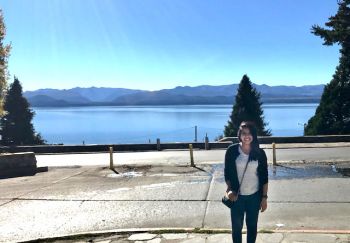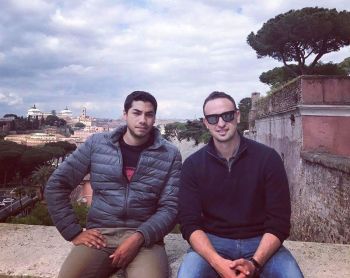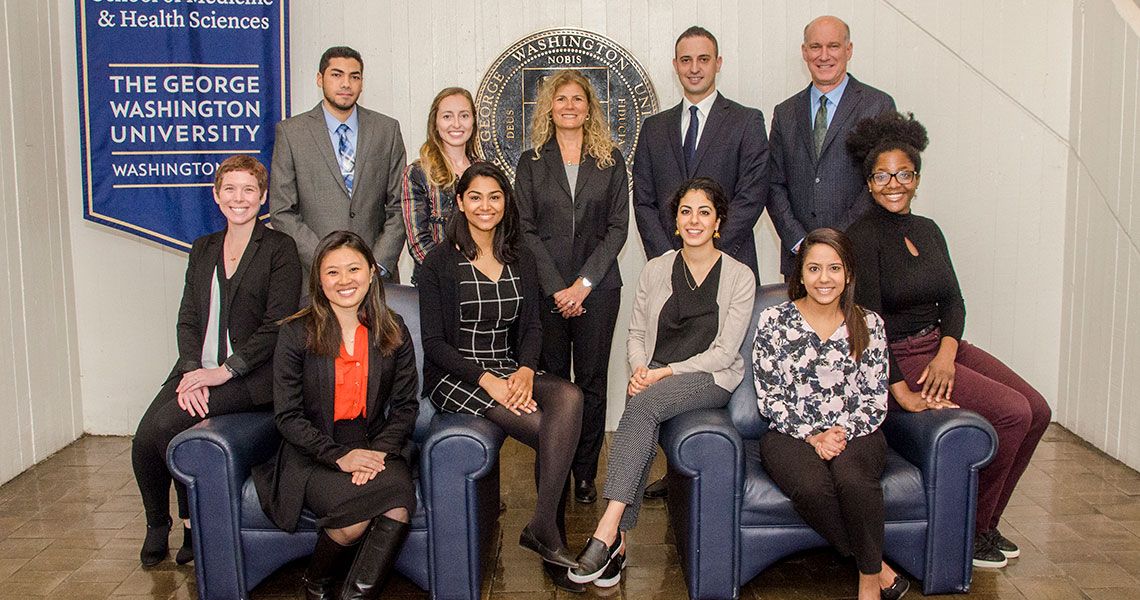For four weeks, George Washington University (GW) fourth-year M.D. student Roma Rajput spent her time within the walls of a children’s hospital learning about the operations of its various departments, improving her triaging skills, and providing high-quality care with limited resources. But she wasn’t at the school’s clinical partner Children’s National Health System in Washington, D.C.; instead, Rajput was in Córdoba, Argentina, immersed in a health care culture far different than the one she knew.

Rajput, along with seven other GW School of Medicine and Health Sciences M.D. students, received the opportunity to participate in a learning experience abroad thanks to the Leonard C. Akman, M.D. ’43, Global Medicine Scholarship. Akman, who passed away in 2011, was a pioneer in heart transplantation, cardiac catheterization, and cineradiography, and worked diligently to bring new modalities to the bedside.
The scholarship is open to third- and fourth-year medical students looking to enrich and diversify their medical education and broaden their public health knowledge by spending a month studying medicine in a different country.
“I probably wouldn’t have been able to do an international rotation if it wasn’t for the scholarship,” said Rajput, now a GW graduate who is heading to St. Christopher’s Hospital for Children in Philadelphia for her residency in pediatrics.
Not only did Rajput have the opportunity to see how health care works in Argentina, she also had a culturally immersive experience, staying with an elderly Argentinian woman and taking an intensive Spanish course. “Going overseas and working in a public health system, I think, really showed me the importance of triaging patients and learning the skill of providing high-quality care given limited resources,” she said.
“I thought it was really wonderful that despite the limited resources [where I was stationed], individuals there still have access to care regardless of their ability to pay,” she added. “Sometimes patients had to wait for hours to receive the care that they needed … and I thought it was wonderful how grateful they were to receive that care despite the circumstances.”

While Rajput was learning to better triage patients in Córdoba, fourth-year M.D. students Amro Nassar and Karim Kherbache were witnessing first-hand how anesthesiologists in Italy intubate and induce patients; both students were stationed at Tor Vergata Hospital in Rome.
Each day, they rode Rome’s underground rail system and a bus out of the city to the hospital, where they looked through the surgery list, met with the anesthesiologists to discuss the cases, and saw step by step how the cases were handled.
One case that stuck out to Nassar involved a patient with an unstable gastrointestinal bleed.
“I was able to see how they were stabilizing the patient from the moment they came into the operating room, and got to see what the anesthesiologists did; for me, that kind of experience is invaluable,” he explained.
Post-graduation, Nassar is off to Lenox Hill Hospital in New York for a residency in pathology, but he said he chose to improve his knowledge of anesthesiology in Rome because it was “one of my last opportunities to get exposed to another field,” he said.
For Kherbache, who is doing his anesthesiology residency in the Sunshine State at Jackson Memorial Hospital, the scholarship enabled him to get more exposure to his field and see what it would be like to work as an anesthesiologist in a European country.
“It was unbelievable for a learning experience — and to explore a new country and its cities,” he said. “When I speak to medical students from other schools, they don’t have the opportunities we have here. It’s a special opportunity I had as a student at GW.”
Rajput echoed that sentiment.
“I’m very grateful that GW does a very good job of helping students explore their interests within medicine outside of their mandated curriculum,” she said. “It’s really great that they support and foster that.”



